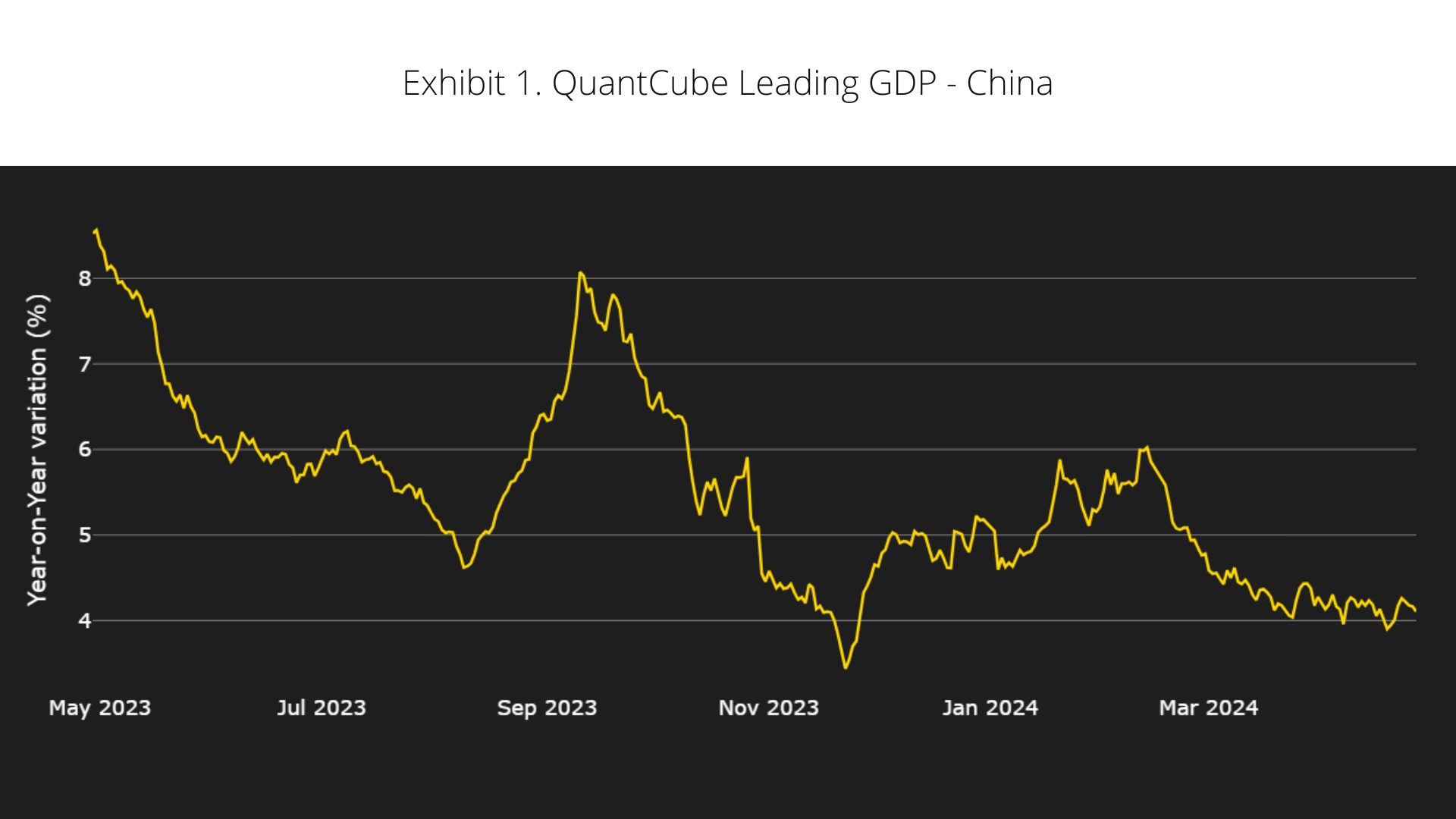Decoding China's economic growth: trends and challenges ahead
China's economy began the year on a strong note, surpassing expectations in the first quarter and raising hopes for a prosperous 2024. Analysts remain optimistic about the economic outlook, attributing the strong start to a solid foundation established in preceding months. However, underlying this apparent strength, there are growing concerns about the sustainability of this growth trajectory.
A detailed examination of alternative data-based indicators presents a nuanced perspective, suggesting a shift from the initial momentum observed earlier in the year. While growth surged notably in the first two months, recent data suggests that this momentum is now starting to wane.
Tracking Chinese GDP trends: QuantCube Nowcast identifies early reversal in February
One of the critical indicators pointing to a slowdown is the shift in Chinese GDP growth trends, as highlighted by QuantCube's GDP Leading indicator in Exhibit 1. The pronounced increase in GDP observed from December to February, a period that typically coincides with the Chinese Lunar New Year, was supported by significant monetary injections from the Chinese government. However, a noticeable reversal in trends towards the end of February suggests that this growth trajectory may not be sustainable in the long term.
Examining consumption challenges amid China’s economic trends
Upon closer examination of the factors behind this downward trend, notable challenges emerge in key sectors of the economy, particularly in consumption and employment. Despite ongoing efforts to shift towards a consumption-driven growth model, the most recent data from QuantCube's Consumption Nowcast highlights a significant decline in consumption, particularly evident in sectors such as recreation as shown in Exhibit 2. It seems that weak consumer confidence and economic instability continue to restrain domestic spending.
Employment trends in China: sectoral divergence
After more than a year since the pandemic, the Chinese labour market continues to show signs of sluggishness. Our Job Openings Nowcast, which monitors job offers from over 300 Chinese companies in real-time, has depicted negative trends from 2022 through late 2023, followed by a brief but ultimately unsustainable rebound. Recent observations highlight notable disparities across economic sectors, with Technology, Financials, Consumer Discretionary, and Real Estate experiencing pronounced slowdowns as shown in Exhibit 3. The slowdown in the real estate sector is particularly noteworthy, given its substantial impact on consumer spending, with approximately 70% of Chinese household wealth tied to real estate.
On the other hand, sectors closely tied to industry, such as Industrials and Materials, have shown positive trends recently as highlighted in Exhibit 4.
This improvement can be attributed to recent monetary stimuli that are boosting factory activity as indicated by the recent rebound in the QuantCube Manufacturing Nowcast. Exhibit 5 showcases the trend evolution of the components of the QuantCube manufacturing Nowcast. Over the last few weeks, we have been observing an improvement in China’s manufacturing activity in terms of output, new orders and exports.
The current resurgence in the factory sector is promising, yet tempered by persistent structural challenges. The recent uptick in factory activity combined with the persisting weak domestic demand, is likely to result in potential oversupply issues, leading to spillovers of industrial overcapacity into export markets.





